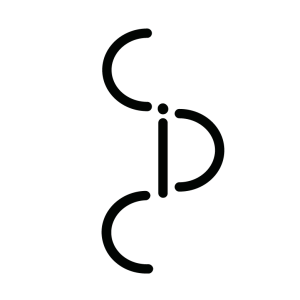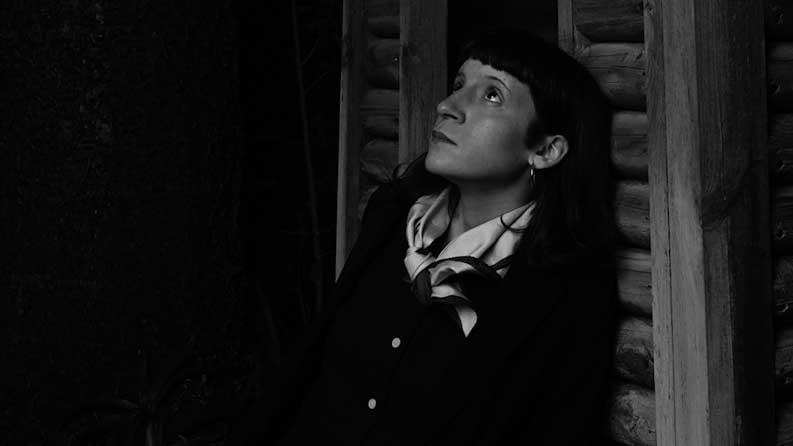Wednesday 26 February 2025
14:00–18:00
Pianofabriek (Brussels)
Program
A workshop on the new possibilities of language and what Salomé Lamas calls ‘Parafiction’.
Rather than positioning herself on the periphery between cinema and visual art, fiction and non-fiction, Lamas seeks to convey the need to appropriate these languages, to break new ground in terms of form and content and also to challenge conventional production methods and the boundaries between different cinematic and artistic forms of aesthetic expression.
Parafiction actively explores the possibilities and limits of transdisciplinary and transmedia situations in contemporary culture as well as the links between aesthetics, materiality and politics. Theory and practice are inextricably linked.
Parafiction responds to technological change and epistemological uncertainty by turning to reflexivity, art and performativity, using strategies of re-enactment, essayism and subjectivism.
A fundamental principle of this practice is the dialogue between disciplines, viewpoints and methodologies. Laboratory and applied research, old and new media, local and global forms of organisation are all guiding principles.
Artist Statement
In a fertile occupation of no man’s land, Lamas refers to her work as critical media practice parafictions.
Rather than conventionally dwelling in the periphery between cinema and the visual arts, fiction, and non-fiction, she has been attempting to make these languages her own, treading new paths in form and content, challenging the conventional methods of production, modes of exhibition and the lines between various filmic and artistic forms of aesthetic expression.
Actively exploring the capacities and limitations of transdisciplinary and transmedial situations in contemporary culture and exploring the connections between aesthetics, materiality, and politics – theory and praxis are intrinsically linked to each other.
She is interested in understanding to what extent can reflexive parafiction produce new social and aesthetic forms and structures while contributing to an awareness of its own form and structure. Parafiction responds to technological change and epistemological uncertainty by turning to reflexivity, artifice, and performativity by taking up strategies of re-enactment, essayism, and subjectivism, and most of the times being accompanied by critical writing.
A parafiction that relies on the boundaries between reality and fiction to rethink a state of uncertainty inherent to our historical moment through contemporary art/cinema helps sort fact from fiction, assisting in reflection and training our minds to confront other kinds of information.
She advocates for parafiction as a vital method which produces new information and perspectives acting as an additional module that connects physical and digital spatio-temporal with alternative potential for pasts, presents, and futures.
A fundamental principle her practice is the dialogue among disciplines, points of view, and methodologies. Laboratory and applied research, old and new media, local and global forms of organization are guiding principles.
Lamas has been researching in different scales, social formations, mappings, systems, and gestures as a cartographer of human activity. She is often drawn to critical zones, geographies of sacrifice and controversial subjects. These liminal territories and marginal characters are brought to the public for critical discussion.
These works of either modified ethnography, performative or allegoric features, show an interest in the intrinsic relationship between storytelling, memory, and history; while using primarily time-based media to explore the traumatically repressed, seemingly unrepresentable, or historically invisible, from the horrors of colonial violence to the landscapes of global capital.
Moreover, Lamas conveys a multidisciplinary approach, critically addressing the social and economic roles of media production, in the stages of development, production, exhibition, and distribution with outcomes ranging from publications, film, video and sound installation.
Her approach to education includes and overspills the framework of systematic, academic, and institutional teaching.
To be coherent with her practice means to dwell on the problems of the translator and to accept the vitality of the collector
About Salomé Lamas
Salomé Lamas has produced over thirty projects, which have been installed and screened internationally, both in cinema auditoriums and contemporary art galleries, and museums. Each of them opens a door onto a different social reality, usually characterized by its geographical and political inaccessibility. The artist’s interest in impenetrable, politically ambiguous contexts is guided by concerns and the need to problematize reality that otherwise would not be possible. The web of relations making up the socio-political fabric of her projects is made visible through representational strategies, for which she adopted the term parafiction. Rather than obeying to a shapeless meaning of parafiction —for which there is no established terminology — she proposes its expansion and resignification.
In her artistic practice, parafiction can be read in the light of its prefix “para-”, in which we encounter various disruptive effects that are vital for its comprehension. Derived from the Latin, “para-” indicates “alongside, adjacent to, beyond or distinct from, but analogous to”; in certain word combinations it can also mean “wrong, irregular” pointing towards an “alteration” or “modification”; further, “para-” implies “separate, defective, irregular, disordered, improper, incorrect, perversion or simulation.” In this way, a parafiction would be something in which fiction has been perverted, altered, modified or pushed beyond its point of reference, as opposed to remaining within the boundaries of the category of fiction. It can also be understood as a “simulation” of fiction, pointing to a distortion of the border around what is considered fiction, thus reaching what is on the other side of that border: that is, the world of non-fiction, or seeking the “real” world. Thus, instead of fiction being used to blur the border with non-fiction, it is used as a way of expanding and transcending those boundaries.
Salomé Lamas begins from the principle that we do not have access to a stable reality. Instead, we have an excess of meanings, interpretations, explanations, manipulations, (de)constructions and evaluations that go into narratives and systems that sustain and occupy us. Consequently, the need for appropriating the idea of parafiction comes from a questioning of how human subjectivity is formed, drawing on psychoanalysis, with the aim of clarifying and expanding concepts such as real (something that is out of reach), reality, symbolic and imaginary. Thus, she is led to operate at the border between fiction and non-fiction, employing representation and hypothesis generation through certain meditative criteria and a deontological code relative to what is plausible, assuming consciously the “task of the translator” — comparable to illusionism — and pushing its boundaries.
In this context, she draws on distinct non-fictional strategies that include ethnographic research, as well as thought experiments, reflexivity, restaging and performativity, among others, to explore the limits of fiction. This can be visible in the development of a working methodology, where we find various manifestations of parafiction, such as scenarios where characters and fictional stories intersect with the world as we are experiencing it. These combined strategies, to the detriment of other speculative aspects, forms a sort of hypothesis that retains a level of exactitude with reality, but also questions its authority. Through parafiction it is possible to take a convention and deconstruct it, distort it, expose the impossibility of providing evidence for the truth, to the point that doubts are raised about its validity, yet still producing reasons for understanding it as plausible.
Salomé Lamas problematizes both sides of the border between historical and imaginary worlds, and records how they have changed over time, by understanding parafiction as a fundamental translation tool for defining identity, language and culture. Intensifying, exaggerating and speculating on how the world is made sensible, by triggering moments that reveal their fabrication, in a post-truth context heightened by the technological and globalized nature of our times. To reveal this transformation is a continuous and thorough undertaking, but also spiritual, having the ability to relate the individual sphere (private) with the social sphere (public) and so introducing new information and perspectives on our past, present and future. Thus, although conscious of limits and apparent contradictions, it helps give form to the chaos of life and endow it with significance, in a compromise between reality and its fictionalization.
Today, the discussion has grown, and a lot can be said about the term and its generalized appropriation by artists, filmmakers, and theorists. These practices can take many shapes, subject matters, starting points, methodologies, and exhibition modes, but above all there is a unifying thread that forces us to return to some fundamental questions about perception, subjectivity, and representation while acknowledging the progressive dissolution of the entire system of individualization, measurement, and localization that makes the earth an inhabitable, political space.
Practical information
Date: Wednesday 26 February 2025
Time: 14:00—18:00
Venue: Pianofabriek (rue du Fort 35, 1060 Saint-Gilles)
Tickets are free, on registration only (limited space)
If you want to attend, please email us at soundimageculture@gmail.com
SOLD OUT – please join our waiting list

